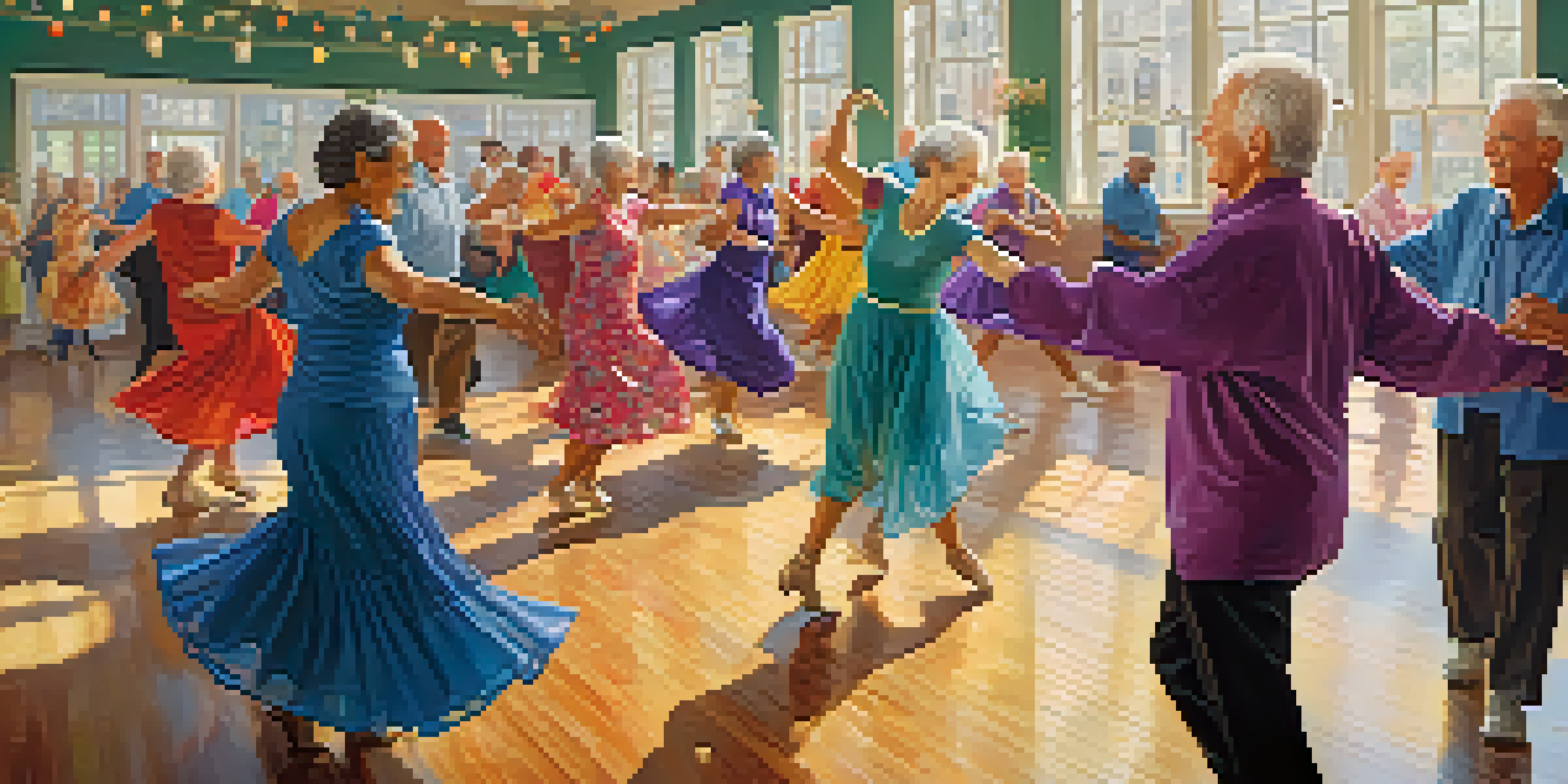How Dance Classes Promote Cognitive Function in Seniors

Understanding Cognitive Function and Aging
Cognitive function refers to various mental abilities, including memory, reasoning, and problem-solving. As we age, these functions can decline, making everyday tasks more challenging. However, engaging in stimulating activities can help maintain and even improve cognitive health, which is where dance classes come into play.
The Connection Between Dance and Brain Health
Dance is not just a form of art; it's a powerful workout for the brain. When seniors participate in dance, they engage multiple cognitive processes, from remembering steps to coordinating movements. This multi-tasking enhances neural connections and keeps the brain agile, much like a mental gym session.
Dance Boosts Brain Health
Participating in dance classes enhances cognitive function by engaging multiple mental processes and improving neural connections.
Social Interaction: A Key Component of Dance Classes
Joining a dance class provides a wonderful opportunity for social interaction, which is crucial for mental well-being. Engaging with others helps reduce feelings of loneliness and enhances emotional health. In a lively dance environment, seniors can share laughter and joy, which can further stimulate cognitive engagement.
Physical Benefits of Dance for Seniors
Beyond cognitive perks, dance classes offer significant physical benefits. They improve balance, flexibility, and coordination, which are essential as we age. This physical activity not only supports overall health but also contributes to cognitive function by increasing blood flow to the brain.
Social Interaction Matters
Joining dance classes fosters social engagement, which is vital for reducing loneliness and enhancing emotional well-being.
Memory and Learning Through Dance
Dance classes often involve learning new routines, which can significantly boost memory skills. This process of memorization challenges the brain and encourages the formation of new neural pathways. Just like learning a new language, picking up dance moves can sharpen mental acuity.
Emotional Benefits and Cognitive Function
Engaging in dance can also lift one's mood, which is beneficial for cognitive health. Studies indicate that positive emotions can enhance memory and learning capabilities. When seniors dance, they release endorphins, fostering a sense of happiness that can lead to sharper thinking.
Physical and Emotional Benefits
Dance not only improves physical health by enhancing balance and flexibility but also elevates mood, which positively impacts cognitive function.
Finding the Right Dance Class for Seniors
With various styles of dance available, it's essential to find a class that suits individual interests and abilities. Whether it’s ballroom, line dancing, or even Zumba, the right class can make all the difference. Look for classes designed specifically for seniors to ensure a supportive and enjoyable environment.
Encouraging Lifelong Learning Through Dance
Dance classes are an excellent way to promote lifelong learning among seniors. The continuous challenge of mastering new steps or styles keeps the brain engaged and active. It’s never too late to start dancing, and the cognitive benefits can lead to a more fulfilling lifestyle.